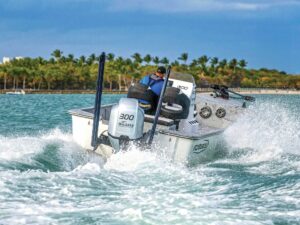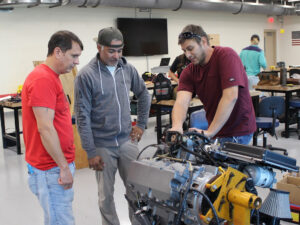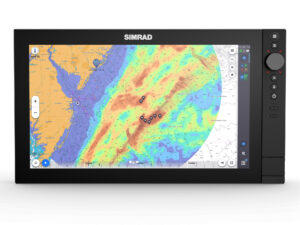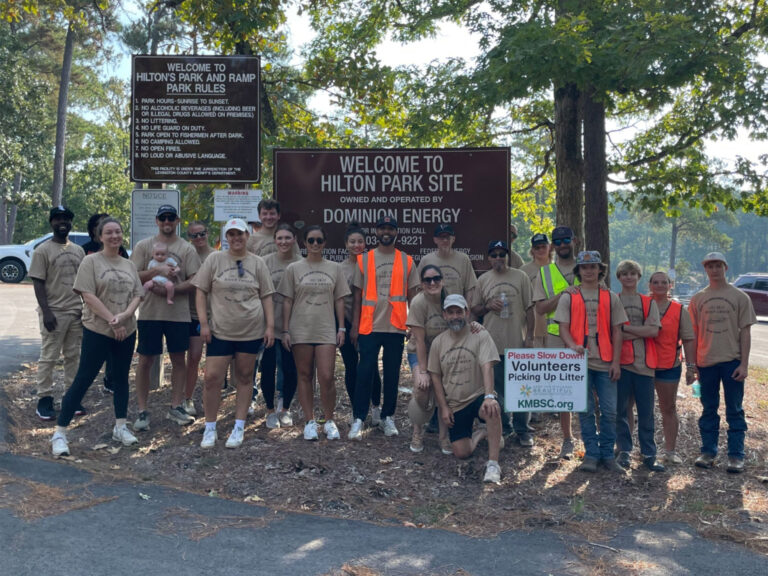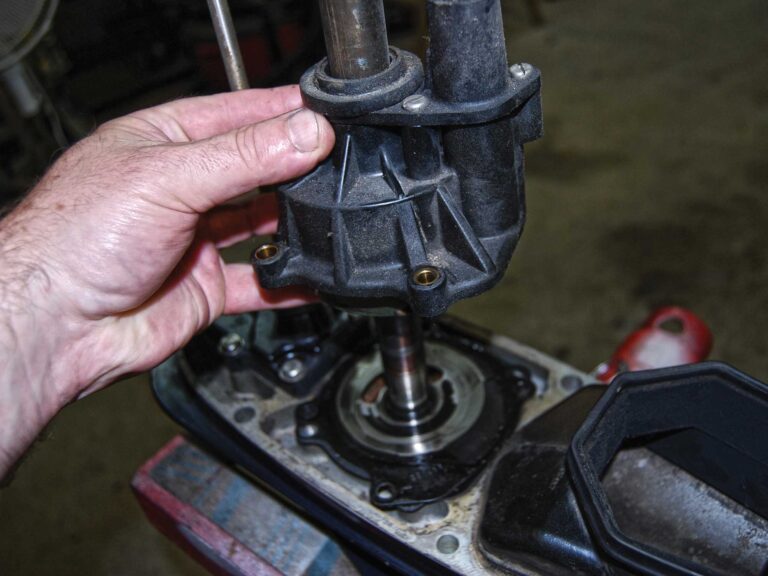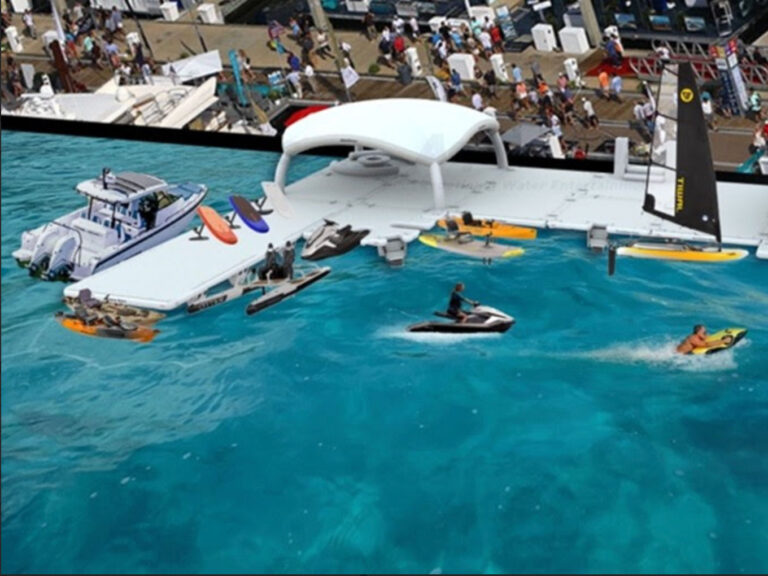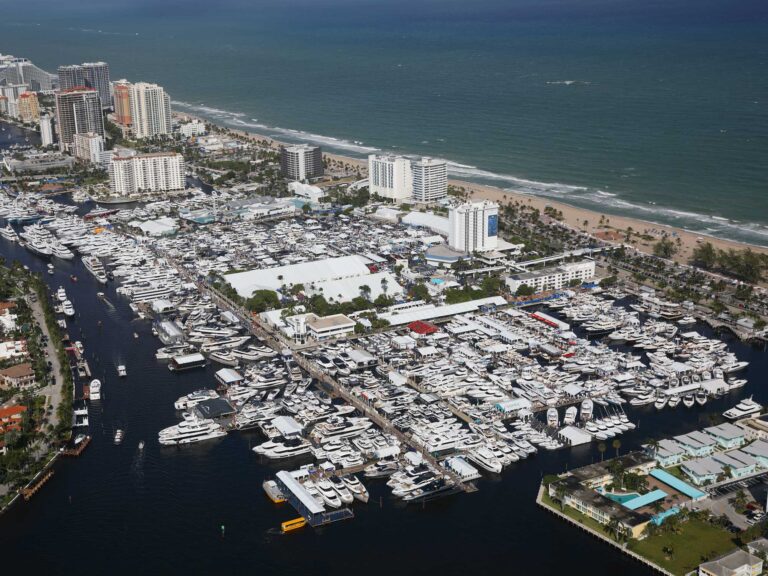
The ancient, sculpted monoliths that give Ruby-Horsethief Canyon’s Black Rocks section its name loomed ahead. I saw my husband’s mouth set in a tight, thin line, and I pulled the girls next to me so I could hold onto them. Sparkles of summer sunlight scattered across the surface of the swiftly running water; it looked calm, but we knew it was very different underneath.
Black Rocks is spooky. Here, the Colorado River winds through an otherworldly pre-Cambrian landscape that’s distinctly at odds with the Mesozoic sandstone around it, funneling through a narrow channel as it plunges to depths of 80 feet. Weird hydraulics are the norm, and we were remembering a June day, on another river, when an unexpected whirlpool pinned our port side and sent us careening into 49-degree water without warning. The memory of fighting to breathe and struggling to shore with my 6-year-old daughter in my arms haunted me, and now we had two little girls aboard.
Following our friend Chito’s line, we sped through the chute, and Richard deftly maneuvered us away from a solid wall of 1.7-billion-year-old rock on one side and out of a swirling eddy on the other. It was only when we landed with a soft bump on our campsite’s sandy beach that I saw the whites of his knuckles.
We’d made it without incident. But not everybody does, so we decided to solicit a little expert advice. To better understand how to cruise this stretch of water safely, we reached out to people who spend more time on the Colorado River than they do at home — the river rangers.


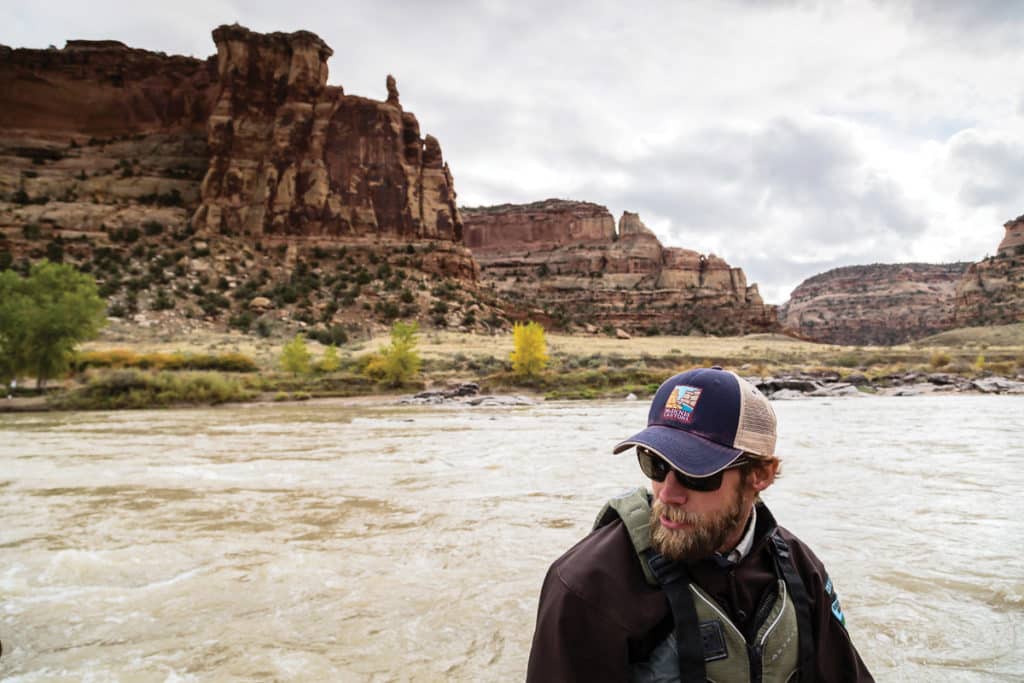

Boating the Plateau
Part of the McInnis Canyons National Conservation Area, Ruby-Horsethief stretches 25 miles from Loma, Colorado, to Westwater, Utah. It’s mostly flat water with sections of Class I and Class II rapids, and it’s celebrated for seven major canyon systems that slice through the Colorado Plateau, adorned with natural arches, spires, hoodoos, alcoves, fossils and pictographs.
It’s also an ideal destination for adventurous boaters. The Colorado River at Ruby-Horsethief Canyon is considered a navigable waterway, so U.S. Coast Guard regulations apply. There are no restrictions for engine use, boat size or speed; you’ll see everything from kayaks, canoes and rafts to personal watercraft, jet boats and fishing boats.
Troy Schnurr, lead park ranger with McInnis Canyons NCA, hails originally from Kansas and has been with the Bureau of Land Management for 25 years. Shawn Ray, recreation technician, came to Colorado from Alabama and just finished his fifth season. The duo staffs the Grand Junction field office and patrols Ruby-Horsethief Canyon.
“We check permits, and we help out wherever we can,” Ray says. “But even if we don’t have weather or water issues, we’ll get inexperienced people who think this is a booze cruise. And that’s a whole different set of problems.”
Schnurr and Ray met us at the Loma boat ramp on a dreary October morning. Low clouds spilled over the plateau’s rim, and the slate-gray river looked brittle and cold. Thankful for extra layers of clothes, we clambered aboard the 18-foot Maravia self-bailing raft. Its Honda 9.9 four-stroke purred to life, and we were off.

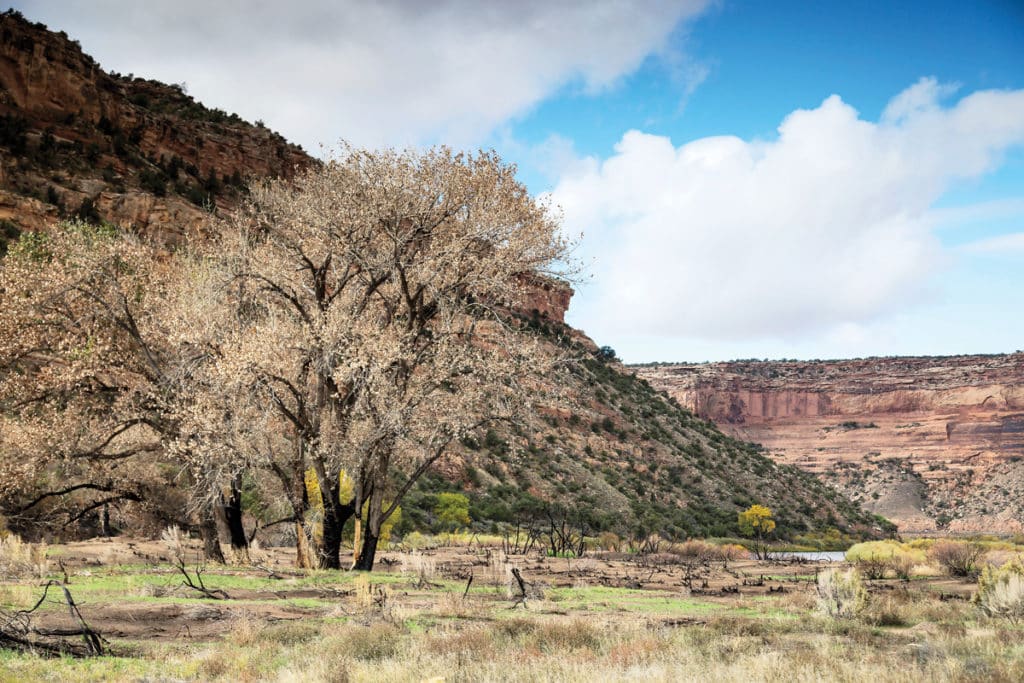
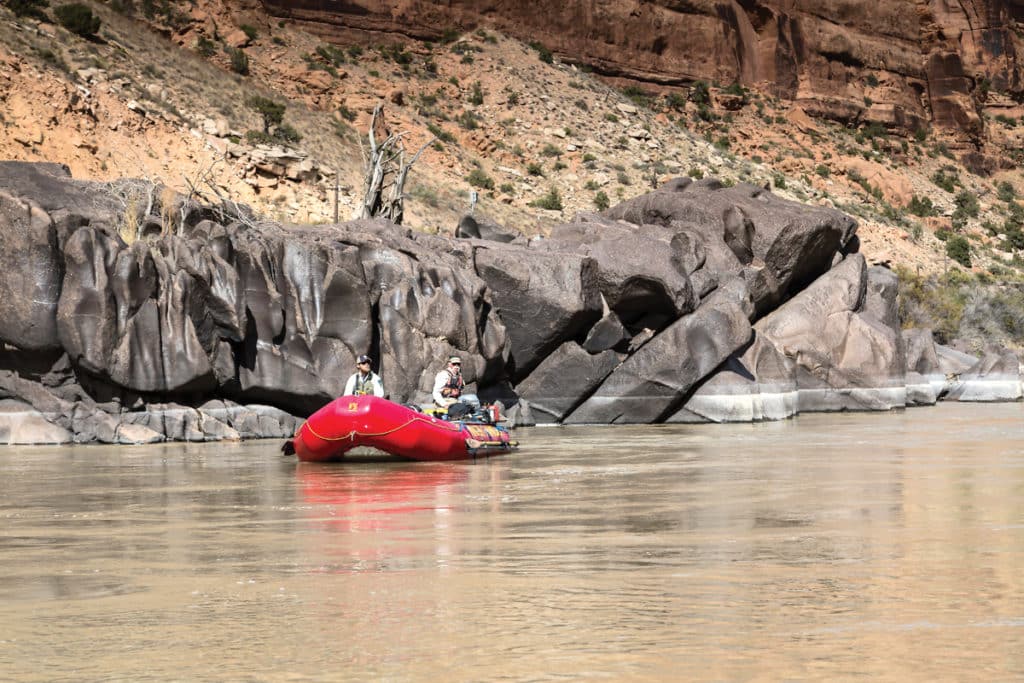
High Water Marks
As we cruised downstream, taking in the area from a rangers’ perspective, we noted the striation in the rock formations along the river’s edge — evidence of ever-changing water levels throughout time. For boaters, high water is a common threat, and it was very much on our minds as we approached Black Rocks for the second time that year, this time in the hands of experts.
“In high water, this section is angry,” Schnurr acknowledged. “You’ve got a huge eddy line, and the river going in a bunch of different directions with major currents reflecting off the canyon walls. It just boils. At 30,000 cubic feet per second, those big rocks can be under water, and the trees get knocked flat with their roots exposed.”
Then there’s that crazy depth. On the one hand, the river here is so deep and swift, it can support populations of threatened pike minnow, roundtail chub and big-game catfish. On the other hand …
“I’ve seen a 60-foot cottonwood with a 10-foot root ball get sucked straight down,” Ray said. “It never came back up. People in full life jackets can get sucked down. Once, at 50,000 cfs, I got a tube pinned, and me and the engine were standing up in the air.”
Perhaps unsurprisingly, if something is going to go wrong in Ruby-Horsethief, this is where it tends to happen.
“You can get summer storms where 60 to 70 mph winds come off the canyon wall,” Ray said. “When people are trying to get off the river, we’ll help with a tow. We pull out swimmers and get kids off the rocks. I once pulled these teenage boys out who were pinned against the rocks. They were only wearing water-ski life jackets.”
Black Rocks may be Class II rapids, but the area requires Class III life jackets. Don’t resort to cheap discount-store life jackets, or consider running Black Rocks in inner tubes or the inflatable sit-on-top watercraft the rangers call “Kmart coffins.”
“The current will take you were you don’t want to go,” Schnurr said.
Before you make any trip on a river, be aware of its water level. At Ruby-Horsethief Canyon, for instance, between 5,000 and 10,000 cubic feet per second is ideal for family boating. Conditions can get iffy in the teens, or if water levels fall below 3,000 cubic feet per second. You can check flows for the Colorado and other rivers at waterdata.usgs.gov.
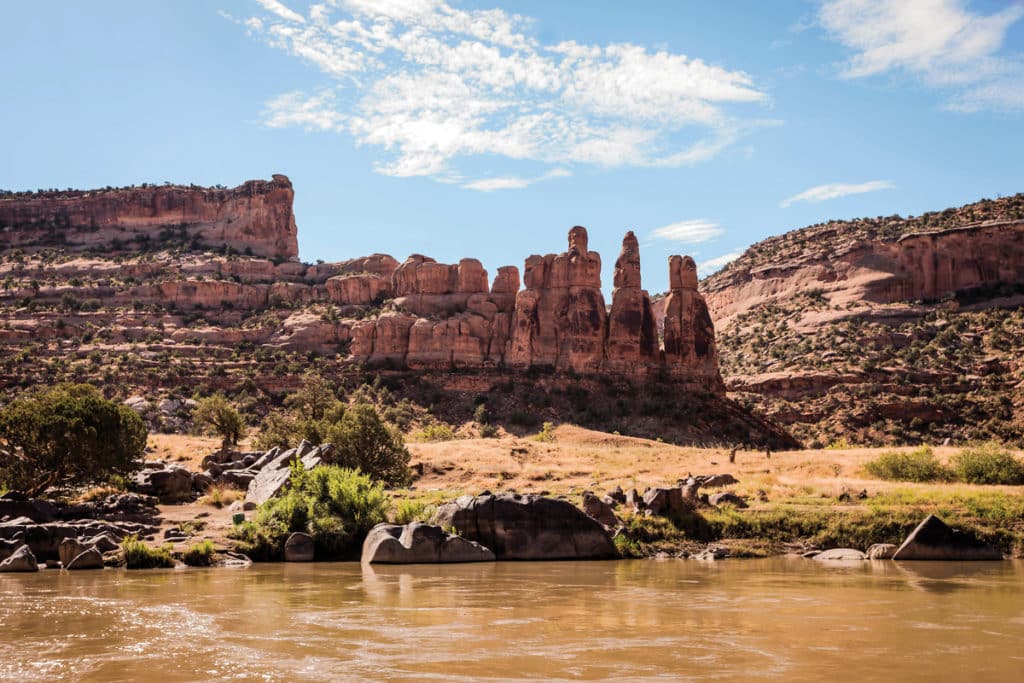


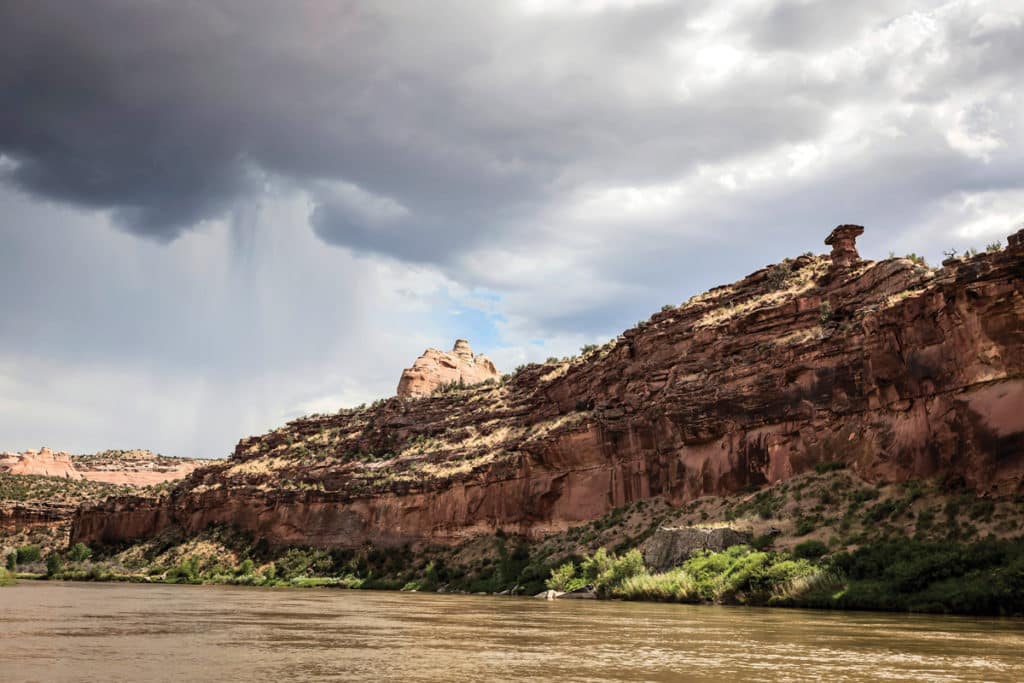

Wind And Waves
We motored past the mouth of 10-mile-long Knowles Canyon, which Ray called his favorite due to its many free-standing spires and impressive monoliths. Its entrance is marked by distinctive “hoodoo eyes,” and in a rainstorm the water pouring over it is epic.
When we were last here, we were making a late-afternoon run from Black Rocks to an overflow campsite near the Utah border. Bruised-looking clouds smothered the sun, and the wind roared down the canyon. Our boat struggled to make any headway. By the time we did reach our new campsite, it was a mad scramble to claw through the mud and tamarisk so we could set up tents before the storm. Hearing this as we drifted past the site, Schnurr chuckled. Most people do not think of river cruising as big water. But it can be.
“A couple of years ago, I was on this stretch of river when I got hit with 70 or 80 mph winds,” he said. “I had 3-foot breaking waves, and I almost flipped.”
If a gale hits you on the nose, which frequently happens in the river canyons, you may find yourself going nowhere — or worse, going backward. If you’re having trouble holding your ground, or if sea conditions become unsafe due to current and wave action, get off the river. Scan river left and river right to find the nearest eddy and shoot for that. You don’t want to be fighting the current to make your landing.
Once you’re ashore, you have three choices: You can channel your inner workhorse and hike along the river bank; you can set up camp, hunker down and wait for the weather to pass; or, if absolutely necessary, you can call for assistance. Cellphones can pick up a signal in the Ruby-Horsethief corridor, so we always have ours charged up and ready to go. We also bring a personal locator beacon when we’re boating in the backcountry, just to be safe.
While you can find serious sea conditions on the river, as all four of us knew too well, we were lucky on this particular day. Bluebird skies finally peeked through the overcast, and the afternoon sun set the cottonwood galleries ablaze with autumn color. In a whimsical nod to the season, someone had left a grinning jack-o’-lantern on a rock to welcome boaters as they crossed the state line into Utah.
All too soon, we were pointing our nose toward the Westwater boat ramp. As we loaded the raft onto the trailer, a fully loaded raft cast off for famous Westwater Canyon just downriver. I envied their journey, remembering the feel of the cool river on a hot summer day, the echoes of coyote howls reverberating off midnight canyon walls, stories around the campfire with the Milky Way wheeling overhead, sudden waterfalls tumbling over the canyon rim in a rainstorm. Even though it holds many dangers, it provides the alert boater the adventure of a lifetime. There’s nowhere else quite like this.
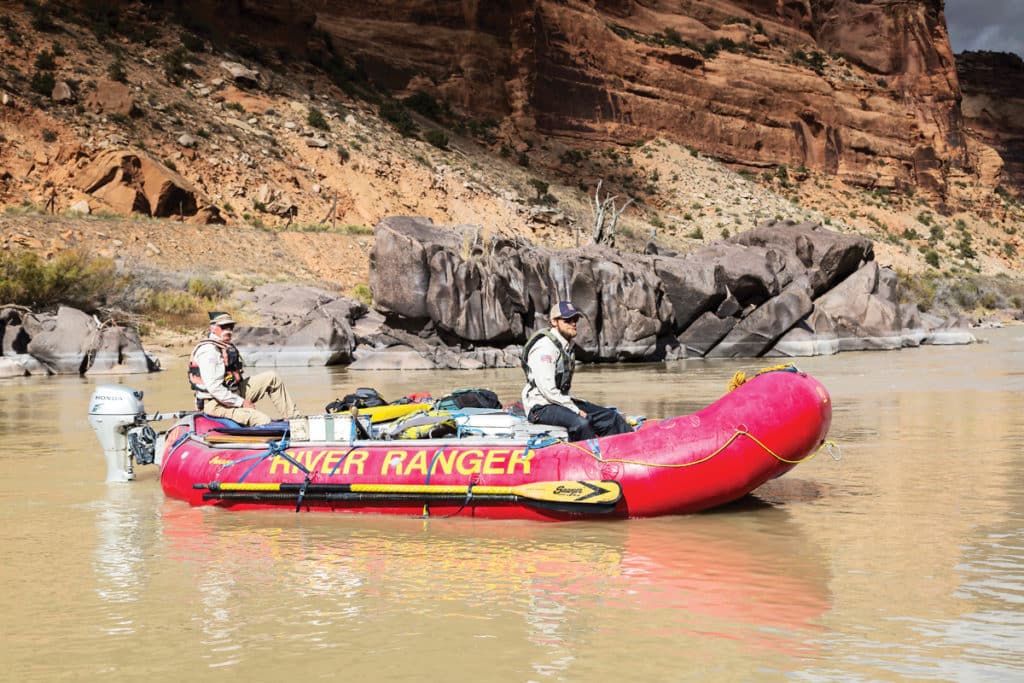
Schnurr and Ray use an 18-foot Maravia self-bailing raft to patrol Ruby-Horsethief. A Honda 9.9 four-stroke engine hangs from a beefy motor mount that’s designed to handle the stress. We assumed the rangers might use a jet boat or aluminum watercraft … why a raft? For these four main reasons. Self-bailing Capability
River conditions can get gnarly in high water or inclement weather. The Maravia features a self-bailing floor with drop-stitch construction, so you don’t have to worry about wet, cold feet soaking in the bilge for hours — or taking on water. Stability
River rafts are wide, which ensures they are incredibly stable. This matters in places, like Black Rocks, where strange currents and powerful hydraulics can spell trouble for narrower watercraft. Load Capacity
Rafts like the Maravia can carry literally hundreds of pounds of gear, thanks to fat tubes and a large floor footprint. That’s good news because in addition to food, water and clothing, you also should pack tools, spare parts and a spare propeller. (Don’t forget to protect your prop with a cage.) Durability
Over the years, Maravia has worked with the U.S. Navy SEAL teams and U.S. Special Operations Command to develop combat-rubber raiding craft and, later, stealth craft. Maravia pioneered what it calls “thermofused seam construction with urethane seamless encapsulation” and introduced tough Class IV fabric. For civilians, that means you don’t have to worry about glued-seam failures or damaging your boat when it inevitably connects with debris, rocks or unseen shallows. Inflatables, thankfully, bounce. Richard Steinberger

